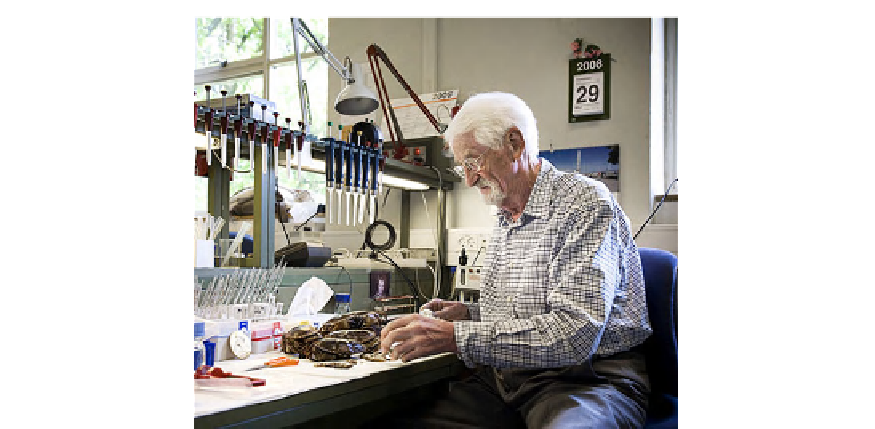Biology Reference
In-Depth Information
FIGURE 10.20
Jens Skou (1918
e
). Courtesy of Find the Best.com, Inc
boundary lipids that surround the channel, there are four non-annular (co-factor) sites that
bind the anionic phospholipid PG. The non-annular sites are only ~60
70% occupied in bi-
layers composed entirely of PG. Increasing the anionic lipid content of the membrane leads
to a large increase in open channel probability, from 2.5% in the presence of 25 mol% PG to
62% in 100 mol% PG. Amodel was proposedwhere three or four of the four non-annular lipid
sites in the KcsA homo-tetramer have to be occupied by an anionic lipid for the channel
to open.
e
3. Non-Anionic Co-Factor Lipids
Although the major effort to identify specific, non-annulus lipid-binding to membrane
proteins has focused on the anionic head group lipids, a few examples involving other types
of lipid head groups or acyl chains have been reported. The most specific of these involves
rhodopsin and the PUFA docosahexaenoic acid (DHA).
Rhodopsin
Rhodopsin is the membrane integral protein that functions as the visual receptor of the eye
rod outer segment (ROS). The protein is solvated by ~24 phospholipids and shows very little
preference of PC over CL. The ROS is highly enriched in DHA, the longest and most unsat-
urated fatty acid commonly found in membranes (see Chapter 4)
[56]
. In the ROS, DHA
levels can approach 50% of the total acyl chains and so would be expected to have a dominant
effect on this membrane's structure and function. In fact there is so much DHA in the ROS
that homo-acid di-DHA phospholipid species have been identified. Many years ago it was
predicted that DHA may possess an unusual structure, perhaps accounting for rhodopsin's
activity
[57,58]
. Easy rotation about each methylene that separates the 6 double bonds results
in a molecule that exists in a wide variety of highly contorted conformations. Two extreme

